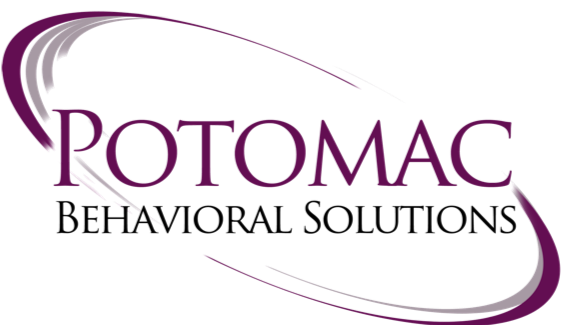Anxiety disorders are frequently related to specific situations/objects or generalized worry about a variety of circumstances. Oftentimes, individuals with anxiety disorders may have co-occurring depressive symptoms and physical symptoms such as tension, pain, or fatigue. These disorders are common and most are considered treatable through a variety of evidence-based techniques which are described below.
What disorders do we FOCUS ON?
Our programming focuses on treating 4 distinct diagnostic categories: Anxiety Disorders, Obsessive-Compulsive and Related Disorders (including Body-Focused Repetitive Behaviors such as hair pulling and skin picking), Trauma- and Stressor-Related Disorders, and Somatic Symptoms and Related Disorders.
DETAILS ON DIAGNOSTIC CATEGORIES
ANXIETY DISORDERS
Anxiety disorders are characterized by excessive fear and anxiety, which often result in avoidance and other behavioral disturbances. This category includes:
Separation Anxiety
Selective Mutism
Specific Phobia
Social Anxiety Disorder
Panic Disorder
Agoraphobia
Generalized Anxiety Disorder
OBSESSIVE-COMPULSIVE RELATED DISORDERS
Obsessive-compulsive and related disorders may involve obsessions (intrusive thoughts or urges), compulsions (repetitive behaviors or mental acts), and/or recurrent body-focused repetitive behaviors. This category includes:
Obsessive-Compulsive Disorder
Body Dysmorphic Disorder
Hoarding Disorder
Trichotillomania (Hair-pulling)
Excoriation (Skin-Picking)
TRAUMA AND STRESSOR RELATED DISORDERS
Trauma- and stressor-related disorders are marked by psychological distress and related behavioral changes following a traumatic or stressful experience. This category includes:
Reactive Attachment Disorder
Disinhibited Social Engagement Disorder
Posttraumatic Stress Disorder (PTSD)
Acute Stress Disorder
Adjustment Disorder
SOMATIC SYMPTOM AND RELATED DISORDERS
Somatic symptoms and related disorders have characteristic features related to preoccupation with perceived or diagnosed medical conditions. This category includes:
Somatic Symptom Disorder
Illness Anxiety Disorder (formerly Hypochondriasis)
Conversion Disorder
Factitious Disorder
TREATMENT PROGRAMS
ADULT ANXIETY, OCD, AND TRAUMA TREATMENT
Details our treatment program are included below.
CHILD AND ADOLESCENT ANXIETY
Anxiety disorders are frequently related to specific situations or objects, or could manifest as generalized worry about a variety of circumstances. Treatment includes education and cognitive-behavioral skills related to addressing anxiety symptoms in children/adolescents as well as helping parents learn to support exposure instead of accommodating their child's anxious avoidance.
TREATMENT PROGRAMS
Our programming focuses on 4 distinct diagnostic categories
Anxiety Disorders
Obsessive-Compulsive and Related Disorders (including Body-Focused Repetitive Behaviors such as hair pulling and skin picking)
Trauma- and Stressor-Related Disorders
Somatic Symptoms and Related Disorders.
INDIVIDUALIZED INTENSIVE PROGRAMS FOR ADULTS
Sometimes, once weekly individual therapy may not be enough support to manage the symptoms of what someone may be experiencing. Individualized intensive programming may be another option to explore with your team. PBS offers programming that uses evidence-based practices in a weekly structured way to provide maximum exposure to interventions, skill development, and symptom amelioration. Programming often runs as a week-long program, however, can be offered over the course of multiple weeks.
HOW DO YOU KNOW IF AN INDIVIDUALIZED INTENSIVE IS RIGHT FOR YOU?
Along with your team, an assessment would be conducted to identify if a higher level of support would be beneficial to address the difficulties experienced, on a case-by-case basis.
TYPES OF INTENSIVE PROGRAMS OFFERED
Just as every individual's needs are different in weekly therapy, this will dictate how your personalized intensive is set up. We offer individualized intensive programming for OCD, anxiety, over-control, body image, eating disorders and disordered eating, food exposures, phobias, emotion dysregulation, and general mental health issues.
INTENSIVE PROGRAM FOR ADULTS
The Intensive Program is specially designed for adults who would benefit from more targeted treatment of OCD and anxiety-related symptoms. The Intensive Program identifies and addresses triggers to obsessions and helps patients prevent mental and behavioral compulsions. Find out more here.
INTENSIVE PROGRAM FOR KIDS AND ADOLESCENTS
The Intensive Program is specialty designed for children and adolescents who would benefit from more targeted treatment of OCD and anxiety-related symptoms. The Intensive Program identifies and addresses triggers to obsessions and helps patients prevent mental and behavioral compulsions. Our approaches include Exposure with Response Prevention (ERP), Cognitive Behavioral Therapy (CBT), and Acceptance and Commitment Therapy (ACT). The Intensive program runs for five hours, five days weekly. Each patient and their family meets one-to-one with providers. Our team includes a psychiatrist and therapists.
TREATMENT SCHEDULE
1. Phone consultation with Intake Coordinator
Goals are to assess level of care recommendations and introduce programming. The Intake Coordinator can also discuss lodging and transportation recommendations.
2. Initial intake and pre-commitment with individual Provider (4-6 weeks of once weekly individual 45-minute sessions)
Psychoeducation (including family members)
Psychological assessment
Structuring the environment
Learning non-avoidant coping
Treatment planning and case formulation
Development of exposure hierarchy
3. Intensive Week (9-2pm Tuesday-Monday)
Review assigned homework exposures
Exposure and skills development protocols
Assign homework for the evening
4. Follow ups
45-minute sessions focused on relapse prevention
COMMON TREATMENT TARGETS INCLUDE:
Compulsions related to:
Washing
Checking
Reassurance seeking
Repeating
Apologizing
Confessing
Straightening
Counting
Perfectionism
Prayer
Mental checking
Figuring it out (e.g., "Am I a good person?", "Am I gay?")
Other Targets:
Fear of flying, animals, or other specific phobias
Social Anxiety
School Avoidance
Obsessions/intrusive thoughts related to:
Vomitting
Doubt
Perfectionism
Hurting others
Immortality/blasphemy
Contamination
Asymmetry
Flaws in appearance
Physical symptoms/somatic obsessions (e.g., fear of




